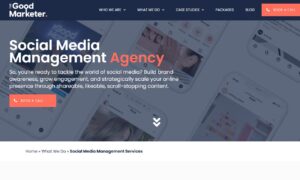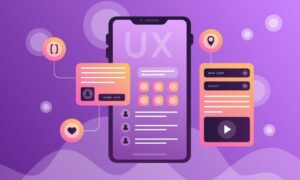User experience (UX) is at the core of every successful digital product, from a two-person startup to a giant like Amazon or Google. Unfortunately, there can be no universal UX design rules. Users’ needs and preferences change. So, designers come up with new ways to keep people interested and willing to pay.
2020 saw a major shift in online behavior and usage. Therefore, any UI/UX design agency for startups working on new projects in 2021 should keep an eye out for a way to implement these five hot trends.
1) Focus on Accessibility
2020 saw an increase in online services usage, not only for remote work but also for entertainment, shopping, and more. Some users are comfortable with the digital space. Others require additional assistance to make their experience seamless and enjoyable. Accessibility becomes increasingly crucial for users with dyslexia, visual or hearing impairments, and senior citizens who are entering the online landscape for the first time.
Web Content Accessibility Guidelines should be on every web developer’s and designer’s radar. Although some recommendations are universal for all users, others are tailored for people with disabilities. Even if this category of users is not a part of your target audience, you should consider running an accessibility audit. Then, develop a step-by-step plan to make the website or mobile app more user-friendly for people with special needs.
2) Built-in AR and VR
Augmented (AR) and virtual reality (VR) technologies have seen a major boost over the last twelve months. This is because immersive solutions were fast-tracked out of necessity. Education, entertainment, and retail have benefited from creating virtual environments or adding an extra informational layer to existing online projects. Even Facebook and Google are getting serious about VR. Startups follow the lead with innovative solutions that blend into everyday applications.
Nearly every digital solution could benefit from an added dimension that augmented reality offers. For instance, furniture and home improvement outlets can provide users with a real-time view of the chosen products inside their homes. You could let users try out a new hairstyle, makeup look, or a tattoo using nothing but their smartphone camera before committing to an appointment or purchase. AR interface development tools are also getting more accessible and affordable thanks to Adobe XD and Google ARCore.
3) Explosive Micro-interactions
Any time users interact with digital solutions, they expect a response. In the time of limited bandwidth, micro-interactions were as innocuous as the changing font color of a hyperlink text. The spread of broadband connection and 5G heralds the age of over-the-top micro-interactions. They dazzle users into deeper engagement with the website or application.
Every user’s action can be animated. Animations may enhance smart screen transitions, link click-throughs, and layout shuffling. However, the exciting animations should never be the end-goal of the UI/UX designer. Instead, every micro-interaction should serve an overarching purpose of keeping the user engaged. It should take them one step closer to the desired action, like a purchase or an email subscription. Careful A/B testing will be necessary to determine the best micro-interaction approach to not annoy the users into leaving.
4) Voice User Interface
Virtual assistants and voice-operated smart home devices have been around for years. But they are finally going mainstream. According to eMarketer, a third of the US population uses virtual assistants. The global usage numbers aren’t far behind. Around a quarter of online users make the most of the smartphone’s voice features. Besides, voice-controlled features play into the accessibility trend we’ve mentioned above.
The voice user interface doesn’t need much by way of visual representation. Still, it should be integrated smoothly and seamlessly. It should provide users with a clear way to switch between typing and using voice commands. Voice search features are the most widespread and can be integrated into many digital solutions. New applications for voice interfaces are likely to appear and spread over the coming years.
6) Enhanced Personalization
Online marketers embraced the targeting capabilities of Google and Facebook Ads a long time ago. But UX designers are yet to follow their example. 2021 may be the right time to do it. Creative content delivery solutions change the way users interact with websites and mobile applications. Amazon and Netflix are prime examples of personalized recommendations. And their strategies have proven extremely successful.
But individual personalization remains unfeasible for many industries. Nevertheless, minor design changes and enhancements can be tailored for target audience segments. The easiest way to spruce up the interface is by introducing seasonal adjustments. For example, you can make an app or website look snowy for winter holidays or green up for spring. Even altering the offers according to the time of day is a great way to make your product more dynamic and enticing. This is what McDonald’s has been doing for years.
Expect the Unexpected
The global crisis changed our everyday lives. The UX trends of 2021 highlight the areas, which have seen explosive growth. This growth is bound to continue over the next twelve months. Our top 5 trends are just the tip of the iceberg, as more trends will follow. We are sure to see an increasing focus on web and mobile security with the integration of biometric authentication capabilities. UX copy will gain a fresh wave of appreciation as people get more used to understandable and personalized content. Brand transparency and virtual escapism will likely affect UI/UX design as well.
We’ll have to wait and see which of these predictions pan out. New and unexpected UX trends may appear in 2021 as the world rides out the crisis.



































